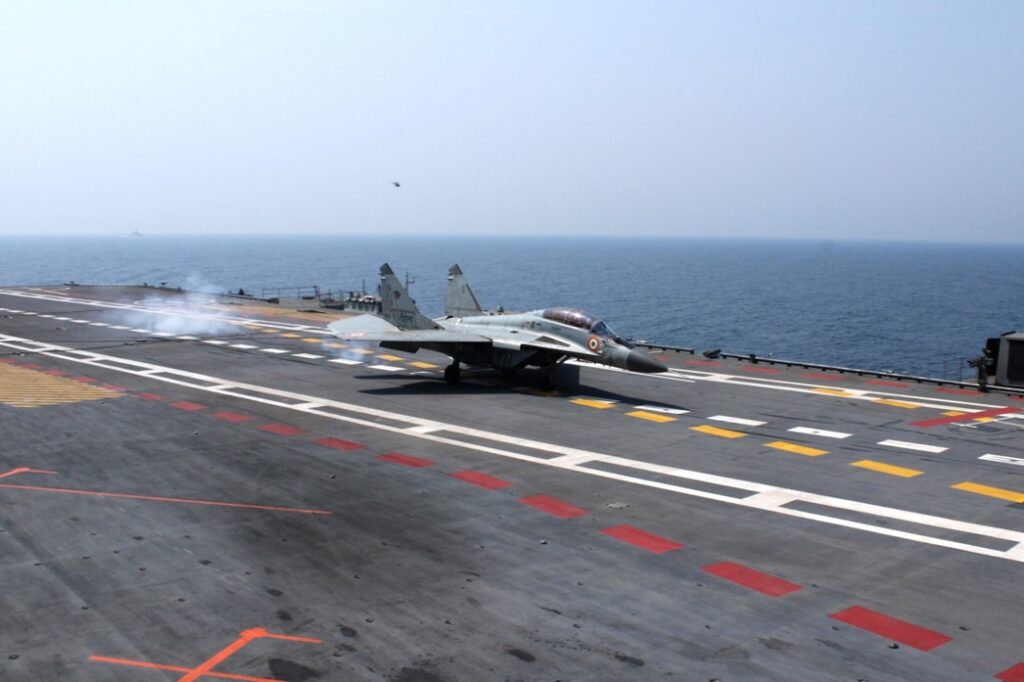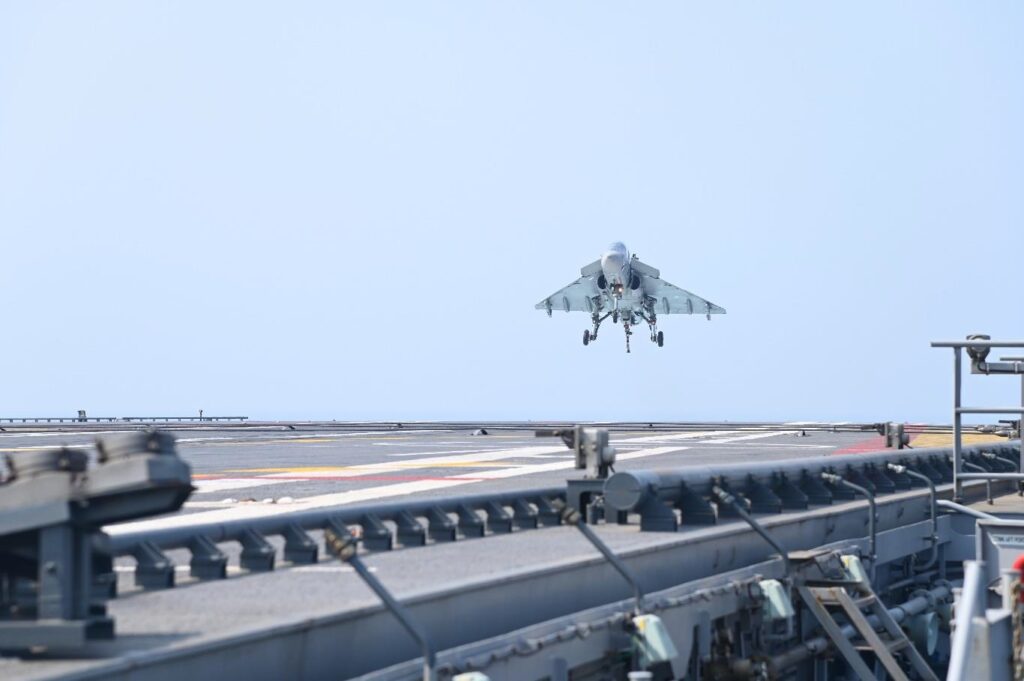A carrier-borne version of the Light Combat Aircraft (LCA) Tejas, called the Tejas-N, successfully conducted its maiden landing and takeoff on the INS Vikrant on February 6, 2023.
This marked the first fixed-wing aircraft to land on India’s first indigenous aircraft carrier since its commission in September 2022.
“The successful landing and take-off of the indigenous LCA Navy on India’s first Indigenous Aircraft Carrier is a momentous step forward towards the realisation of our collective vision of AatmaNirbharBharat [a campaign to increase India’s industrial self-reliance – ed. note],” commented R. Hari Kumar, India’s Chief of the Naval Staff.
Developed by Hindustan Aeronautics (HAL), the LCA Tejas is the first fighter jet designed and built in India since the HAL Marut in the 1960s. It is defined by its manufacturer as a light 4+ generation fighter, equipped with an AESA radar, BVR (beyond visual range) missiles, and an electronic warfare suite.
Following the landing of the Tejas-N, a MiG-29K fighter also landed and took off for the first time on the warship.
“The maiden landing of the MiG-29K also heralds the integration of the fighter aircraft with INS Vikrant,” Kumar added.

Arming the INS Vikrant, India’s first indigenously built aircraft carrier
The INS Vikrant has a displacement of around 40,000 tons and a length of 262 meters (860 feet), slightly shorter than the INS Vikramaditya, the flagship of the Indian Navy based on a Soviet Kiev-class aircraft carrier.
Like every carrier of the Indian Navy so far, the INS Vikrant is in Short Take-Off But Arrested Recovery (STOBAR) configuration, meaning that it is equipped with a ski-jump ramp to allow carrier-capable aircraft to take off.
At first, the Vikrant carrier air wing will be composed of MiG-29K fighters acquired from Russia in 2009. 26 naval fighters will eventually replace them as part of the Multi-Role Carrier Borne Fighter program. Two candidates are being considered: the Boeing F/A-18 Super Hornet and the Dassault Rafale fighter jet.
Unnamed defense sources have told local media that the evaluation process found the Rafale M to be “more suitable in meeting the operational requirements and criteria” of the Indian Navy compared to its competitor.
Eventually, India hopes to develop its own carrier-capable fighter as part of the Twin Engine Deck Based Fighter (TEDBF) program. The latter is expected to enter service by 2032. The Tejas-N was initially expected to fill that purpose but was rejected by the Indian Navy in 2016 as it was deemed “too heavy”. The Tejas-N now assumes the role of a technology demonstrator for the TEDBF program.

